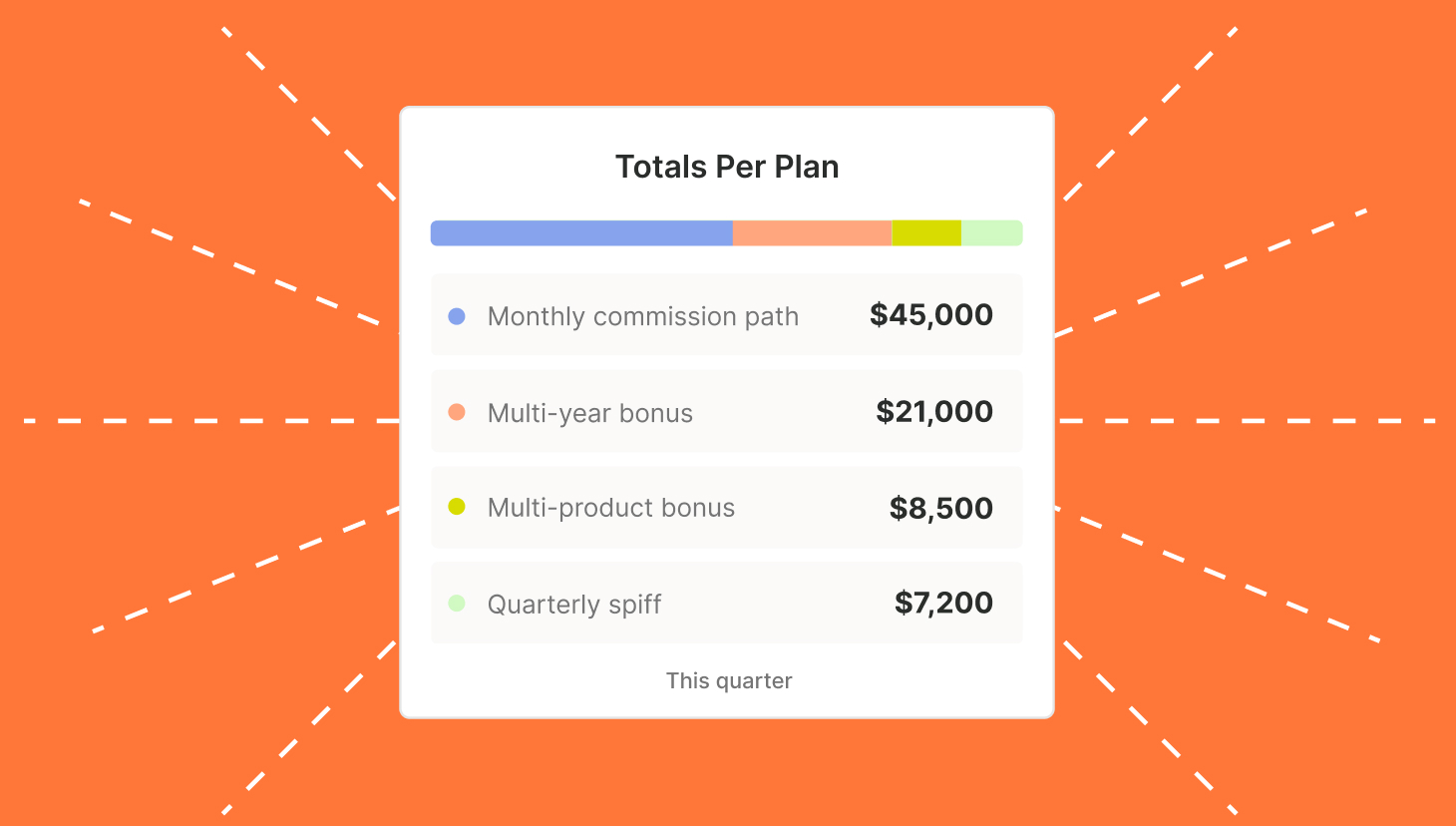Parental leave policies are generally lacking, especially for women in sales.
According to a study published by Moms First last summer, nearly two-thirds (60%) of moms voiced negative experiences with their parental leave policies.
What’s more, 42% of expecting moms said they’d consider quitting their jobs upon giving birth, citing burnout as a leading reason. And for moms with children under 5, 39% worried they would fall behind on their career trajectory.
“It’s the only role in the business where you get punished for going on leave.”
Jessi Johanson, Tilt
That’s especially worrisome in today’s market amid an economic slowdown due to crushing inflation rates.
Dual income scenarios are not just the norm — but a must.
So why haven’t businesses done more to ensure both parents can work?
“The economy has to thrive, which means we must build future generations. Women in the workforce need to be able to work and build families,” said Emily Bell, Head of Client Services at Blueprint Expansion.
“That’s the part that continues to baffle me. Logically, from a business perspective, how has this not resonated with leaders? It’s a miss. There has to be empathy, but at a minimum, there have to be appropriate parameters to ensure economic growth at the fundamental level,” said Emily.
AKA – creating work environments that accommodate working parents, especially mothers, beginning with leave policies.

Parental Leave In Sales
Now, keep in mind this study surveyed women across all professions. How do you think these percentages shift regarding moms in Sales roles, a profession notorious for its burnout and historically less inclusive and equitable work environments for women?
Have we created workplace cultures and parental leave policies that encourage and invite new moms (and parents) to return to their performance-based sales roles?
In our experience, more often than not, companies do not adjust compensation plans and targets for their reps on parental leave.
So, while most offer a parental leave policy for sales roles in accordance with the State and Federal Family and Medical Leave Acts, companies fail to account for the entire on-target earnings (OTEs) reps earn versus their base pay.
Streamline commissions for your RevOps, Finance, and Sales teams
Design, track, and manage variable incentives with QuotaPath. Give your RevOps, finance, and sales teams transparency into sales compensation.
Talk to Sales“Every other employee at the company is getting their full normal pay while on leave, and their manager and the business accept that output for that team will decrease,” wrote Parentaly co-founder and CEO Allison Whalen in her blog. “And yet, most companies still will only guarantee their sales reps just their base pay during this time, and often, the business will expect the sales team to hit numbers as though the sales rep isn’t on parental leave.”
“It’s the only role in the business where you get punished for going on leave,” said Jessi Johanson, VP of Sales at leave management company Tilt.
Jessi previously worked for a company that didn’t have an actual sales parental leave policy.
“From my perspective, I felt like I got totally screwed. My base was nothing compared to my take-home pay,” Jessi said. “The short-term disability accounted for 60% of my base pay, which for me, was a huge pay cut during a very significant time in my life.”
This base-only leave policy hurts our sales parents, specifically moms, who take full leave more frequently than the secondary caretaker.
“Men who have had children while working in sales typically take the minimum amount of leave,” said Sales Leader Olivia Millard, who we previously connected with. “They have a child, keep their pipeline, come back early, and end up not sacrificing any deals.”
Meanwhile, moms return to empty pipelines and full quotas while attempting to compensate for the lost commission wages tied to their OTEs that went unaccounted for in their parental leave policy.
However, the more attention we give this topic, the more likely teams are to fairly compensate sales parents out on leave and adjust targets and pipelines so they don’t have to start from zero.
To help ignite change at your organization, we talked to several revenue leaders to learn best practices and policies to consider.
“My base was nothing compared to my take-home pay. The short-term disability accounted for 60% of my base pay, which for me, was a huge pay cut during a very significant time in my life.”
Jessi Johanson, Tilt
Jessi Johanson, VP of Sales, Tilt — Commission Splits
After her less-than-desirable parental leave experience at a previous employer with her first child, Jessi joined Tilt in 2020 while pregnant with her second.
Tilt is an end-to-end leave of absence management platform for companies of all sizes. It supports employees on leave, their direct supervisors, human resources, and payroll teams.
As VP of Sales, Jessi has reviewed and advised hundreds of customers on their leave policies. And at Tilt, she helped develop their policy for sales reps, which includes the following:
- Account executives (AEs) work territory and pipeline until the day they leave.
- They pro-rate the quarterly quota when the rep leaves by breaking it down by month.
- For example, if a rep leaves in the middle of the quarter, they are prorated a month and half of the quota.
- While the rep is out, the rep earns commission splits with a rep of equal performance based on the stage the deal was in when the rep left.
- Quota retirement and earnings on commission split depend on the stage of the deal
- If a deal is already in the closing process, Jessi takes it (rep on leave receives full commission)
- Rep’s return: With a sales cycle of about 90 days, Tilt’s reps on leave return to 90 days without a quota.
- This allows the rep to build a pipeline for 90 days
- Jessi also prorates the first quarter depending on the segment (enterprise vs. SMB)
Tilt has about 100 employees, so Jessi mentioned that larger businesses’ policies might look a little different.
“One of the things I see quite a lot from larger companies who have a bunch of money and who do this well is instead of commission splits, they’ll take average commissions from the past four quarters and give it to the AE while on leave,” Jessi said.
Jessi’s Best Practices on Adjusting Comp Plans For Your Parental Leave Policy
- Work with Tilt. “I’m happy to have conversations with people!” Jessi said.
- Read content and consume other ideas to structure it (look at LinkedIn, read QuotaPath’s blogs, etc.)
- Be specific and document: “It can feel overwhelming, but in this situation, getting into the weeds is good and helpful. This is not a policy that you can stroke with a broad brush. Be specific. AEs will appreciate the shit out of it,” Jessi said.
- Have a formula for prorating quota
- Build templates
- Keep it consistent every time someone goes on leave
“If you don’t take this seriously and have a good policy in place, it does impact the business. I left! I was a top performer. That impacted their revenue,” said Jessi. “Have a policy. Make it as employee-friendly as you can in whatever stage of the company you are. It will hurt you in the long run.”
“Sales professionals should be given the same opportunities as other professionals. More importantly, we should see more females in sales. If there is an inherent punishment for doing things like having children, they won’t want to be in this business.”
Jessi Johanson, Tilt
Emily Bell, Head of Client Services, Blueprint Expansion — Average of OTE
Like Jessi, Emily experienced leave policies as an enterprise sales rep at two SaaS companies.
“One of the two did it way better, but neither was perfect,” Emily said.
Emily found that the three most significant concerns for sellers taking leave are:
- What variable coverage will you have while you’re out? Who will close the rep’s deals?
- Who manages your accounts while you’re out? If they are closed/won, who gets paid, if at all? What does that coverage plan look like?
- How do you re-enter and manage that pipeline? “You’re asking your peers and colleagues to cover for you for 3-4 months, and they deserve compensation for that, but it shouldn’t come out of my maternity leave policy — especially at larger companies,” Emily said.
As far as the best of the two policies Emily shared, it included:
- 100% base salary coverage through 3 months’ leave
- Employees there longer than 12 months were eligible for four months
- OTE: The company took cumulative variable attainment across the previous two years and gave the average monthly amount.
- “I felt this was fair and equitable,” Emily said.
- Peer coverage: Colleagues who covered her 7-8 working enterprise opportunities were paid in full while she earned average earnings tied to previous performance
- 30-day transition period when deals are passed back: Hold specific convos around exceptions and hold-over scenarios.
- “As long as that individual is made whole in the pipeline scenario, I don’t need a deal that is about to close, but I do need pipeline because I was out for so long,” Emily said.
She added, “I haven’t been able to return without feeling like the wheel has stopped, but I thought it was a fair trade.”
Meanwhile, her other company had told her, “We don’t want to make you so comfortable that you don’t come back.”
“I lived through two very different scenarios,” Emily said.
Emily’s Best Practices Adjusting Comp Plans For Your Parental Leave Policy
- Build a culture of diversity. “Make sure people understand that we value them,” Emily said.
- Avoid guinea pigging your policy: “Leadership seems okay with women ‘helping us spearhead this,’” Emily said. “After two teams being the guinea pig, I’m tired. Expecting women to perform while navigating all this and pioneering these new policies is unreasonable.”
- Have empathy. Recognize how challenging this is for people in your workforce, especially when it’s their first child.
“It’s impossible not to have dual-income households in today’s economic scenario. This is not a romantic statement. At the end of the day, it benefits our economy to have better policies in place. You must have women in the workforce, generating revenue and paying taxes. If we’re forced to do this, whether you’re having a family or not, mismanaged leave policies will eventually impact you.”
Emily Bell, Blueprint Expansion
Additional Considerations for Parental Leave
A few other leaders also shared their thoughts on comp plans for parental leave.
Sergey Mann, Head of RevOps at Hebbia AI, conducted extensive research before modeling their plan and noted that deal cycle lengths significantly impact your leave policy since enterprise deals tend to complicate things.
To adjust for this, his company, which followed a 4- to 6-month-long enterprise sales motion, gave the reps a guaranteed variable draw for the months ahead.
“The amount was tied to the percentage of quota attainment from the previous year,” Sergey said. Reps could exceed the draw if they won deals while out on leave that they had worked leading up to it. Managers covered late-stage deals, and the rep on leave earned full credit.
Another rep on the same manager’s team handled early-stage deals, and the two reps split the credit. Additionally, the company offered quota relief for the months out and a slight quota ramp upon return.
“We tried to come up with a policy that was most fair to all parties: the rep on leave, their manager, other reps covering their deals, and the company,” said Sergey.
Another source, who wished to remain anonymous, offered a glimpse into what her previous company offered during her parental leave.
“Based on the last six months of my OTE history, they compensated me 100% OTE while out to make sure I stayed whole,” she said. “I hit 100% the previous two quarters, so that was awesome.”
What wasn’t great was when the company gave her book of business to other reps and then did not return those accounts in her pipeline upon her return.
“Ramping up was difficult. So much of our quota depended on expansion. While I closed a ton of new business, I simply could not be on equal footing with my colleagues given I had no quota relief upon return,” she said, adding that she went from the top rep to the bottom.
She said, “I couldn’t get back to the top for at least six to 12 months.”

Next Steps
We hope you found this piece of content meaningful and that you feel prepared to initiate change at your organization.
Your first step should be to start having conversations about your organization’s current policy (or lack thereof). Then, research policies within your peer networks and at other companies to compare and identify where yours falls short or exceeds.
For additional support sparking the conversation at your company, check out our full interview with Oliva Millard and learn what steps she took to impact change at her employer.
Our VP of RevOps, Ryan Milligan, also helped develop QuotaPath’s policy to support our reps and leaders who earn variable payouts on parental leave.
Streamline commissions for your RevOps, Finance, and Sales teams
Design, track, and manage variable incentives with QuotaPath. Give your RevOps, finance, and sales teams transparency into sales compensation.
Talk to SalesHe recommends:
- Analyze Current Compensation Structure: Before designing parental leave policies for your sales compensation plan, it’s crucial to understand how your reps are currently compensated.
This includes reviewing their base salary, variable pay structure (commissions, bonuses, etc.), and Overall Target Earnings (OTE).
Consider questions like: What’s the breakdown between base salary and variable pay? How much control do reps have over their commissions?
- Plan for Leave Management: Develop a clear strategy for handling reps’ deals and leads while they’re on parental leave.
This includes assigning ownership of ongoing deals and outlining a plan to keep existing leads warm and engaged.
- Choose Your Leave Policy Approach: Determine the level of support you want to offer during parental leave.
Options range from a conservative approach of paying base salary only to a more progressive approach of continuing full OTE payments.
- Facilitate a Smooth Re-entry: Implement strategies to maintain deal pipelines and prospect engagement while reps are on leave.
The goal is to ensure reps don’t return feeling overwhelmed or behind upon re-entering the workforce.
Consider offering ramp-up plans to help them regain momentum and achieve their OTE goals for the year. - Communicate Clearly and Transparently: Effectively communicate your compensation plan’s parental leave policies to your sales team.
Explain the rationale behind your chosen approach and provide clear details on how leave impacts compensation. Openly sharing the “whys” and calculations fosters trust and understanding within the team.
Need additional help with your sales compensation plan design and management? Schedule time with our team to learn how QuotaPath can optimize your compensation plan’s performance and run payouts more efficiently.



